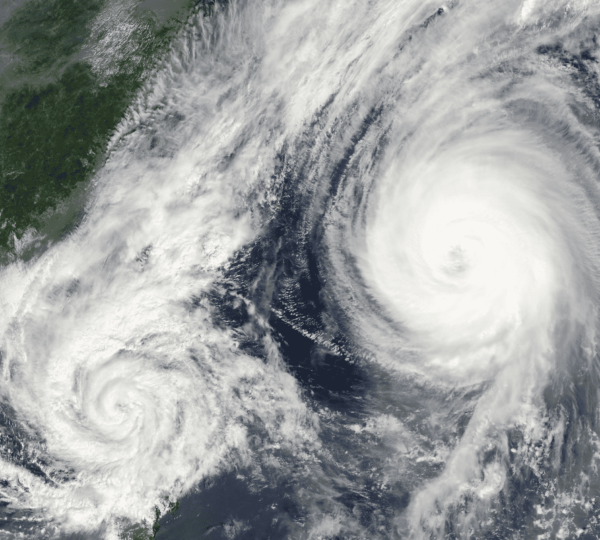
How to Help Someone During a Hurricane: Simple First Aid Tips
According to the National Oceanic and Atmospheric Administration (NOAA), hurricanes have caused an average of $1.9 billion in damages annually over the past 20 years, with injury rates rising as communities are displaced and emergency services are overwhelmed. Understanding basic first aid becomes crucial in these moments, as immediate help can significantly improve the chances of recovery.
Recent studies show that 40% of hurricane-related injuries occur post-storm, often when people return to damaged homes or attempt to clear debris. Cuts, broken bones, and even carbon monoxide poisoning from improper generator use are common injuries. The Florida Department of Health reports that in the chaos following Hurricane Ian in 2022, there was a significant spike in preventable injuries caused by a lack of basic safety knowledge. With power outages and limited access to professional medical services, many found themselves relying on neighbors, family, and friends for care.
While hurricanes are unpredictable, being prepared to assist someone with first aid can make a world of difference. Whether it’s addressing wounds, preventing heatstroke, or managing broken bones, your ability to act quickly and effectively could mean the difference between life and death. This guide provides essential first aid tips to help you care for others during a hurricane crisis, empowering you to step in and offer support when it’s needed most.
Assessing the Situation
- Prioritize: If multiple people are injured, assess their conditions and prioritize those with life-threatening injuries.
- Safety First: Ensure your own safety before attempting to help others. Avoid approaching downed power lines or unstable structures.
- Call for Help: If the injuries are severe or beyond your capabilities, call emergency services immediately.
Common Injuries After Hurricanes
- Cuts and Abrasions: These are common injuries caused by debris and falling objects.
- Burns: Burns can occur from fires, hot debris, or scalding water.
- Broken Bones: Falls and debris can lead to fractures.
- Head Injuries: Concussions and other head injuries may result from impacts.
- Hypothermia: Exposure to cold weather and wet conditions can lead to hypothermia.
- Heat Exhaustion and Heatstroke: High temperatures and humidity can cause heat-related illnesses.
- Drowning: Hurricanes can lead to flooding, increasing the risk of drowning.
- Carbon Monoxide Poisoning: If generators are used improperly, they can emit carbon monoxide, a deadly gas.
First Aid for Common Injuries
- Cuts and Abrasions:
- Control bleeding: Apply direct pressure to the wound.
- Clean the wound: Use clean water to rinse away dirt and debris.
- Bandage the wound: Cover the wound with a clean bandage.
- Seek medical attention: If the bleeding is severe or the wound is deep, seek medical help.
- Burns:
- Cool the burn: Run cool water over the burn for 15-20 minutes.
- Do not apply ice: Ice can worsen burns.
- Cover the burn: Loosely cover the burn with a sterile bandage.
- Seek medical attention: For severe burns or burns to the face, hands, feet, or genitals.
- Broken Bones:
- Immobilize the limb: If possible, immobilize the broken limb using splints or a sling.
- Do not move the injured person: Avoid moving an injured person with a suspected broken neck or back.
- Seek medical attention: Call emergency services immediately.
- Head Injuries:
- Monitor for signs of a concussion: These include confusion, dizziness, headache, nausea, vomiting, and changes in behavior.
- Do not move the injured person: If a head injury is suspected, avoid moving the person.
- Seek medical attention: Call emergency services immediately.
- Hypothermia:
- Warm the person: Move the person to a warm environment and remove wet clothing.
- Wrap the person in blankets: Provide warm blankets or clothing.
- Offer warm fluids: If the person is conscious, offer warm fluids.
- Seek medical attention: If the person’s condition deteriorates or they become unresponsive.
- Heat Exhaustion and Heatstroke:
- Move the person to a cool area: Get the person out of the heat and into a cool, shaded area.
- Hydrate: Offer cool water or sports drinks to replenish fluids.
- Loosen clothing: Remove any tight-fitting clothing.
- Seek medical attention: If the person’s condition deteriorates or they become unresponsive.
- Drowning:
- Remove the person from the water: If possible, remove the person from the water.
- Check for responsiveness: Check for breathing and a pulse.
- Begin CPR: If necessary, start cardiopulmonary resuscitation (CPR).
- Seek medical attention: Call emergency services immediately.
- Carbon Monoxide Poisoning:
- Get the person to fresh air: Move the person to a well-ventilated area.
- Monitor for symptoms: Symptoms of carbon monoxide poisoning include headache, dizziness, nausea, vomiting, and confusion.
- Seek medical attention: Call emergency services immediately.
Additional Tips
- Stay calm: Panicking can hinder your ability to help effectively.
- Communicate: Clearly communicate with the injured person and any bystanders.
- Follow instructions: If emergency services arrive, follow their instructions carefully.
- Offer emotional support: Provide comfort and reassurance to the injured person.
- Be aware of your own limitations: If you are not trained in first aid, do not attempt to treat serious injuries.
The American Red Cross recommends taking a first aid course to learn essential skills for responding to emergencies.
Remember: While these tips can be helpful, it’s essential to seek professional medical attention for serious injuries.
Reference:
- National Oceanic and Atmospheric Administration (NOAA): “Hurricane History and Statistics.” https://www.noaa.gov/historical-hurricane-tracks
- Florida Department of Health:
“Post-Hurricane Injury Reports and Safety Tips.” https://www.floridahealth.gov/about/emergency.html - American Red Cross: “First Aid Guidelines for Emergencies.” https://www.redcross.org/take-a-class/first-aid/performing-first-aid













